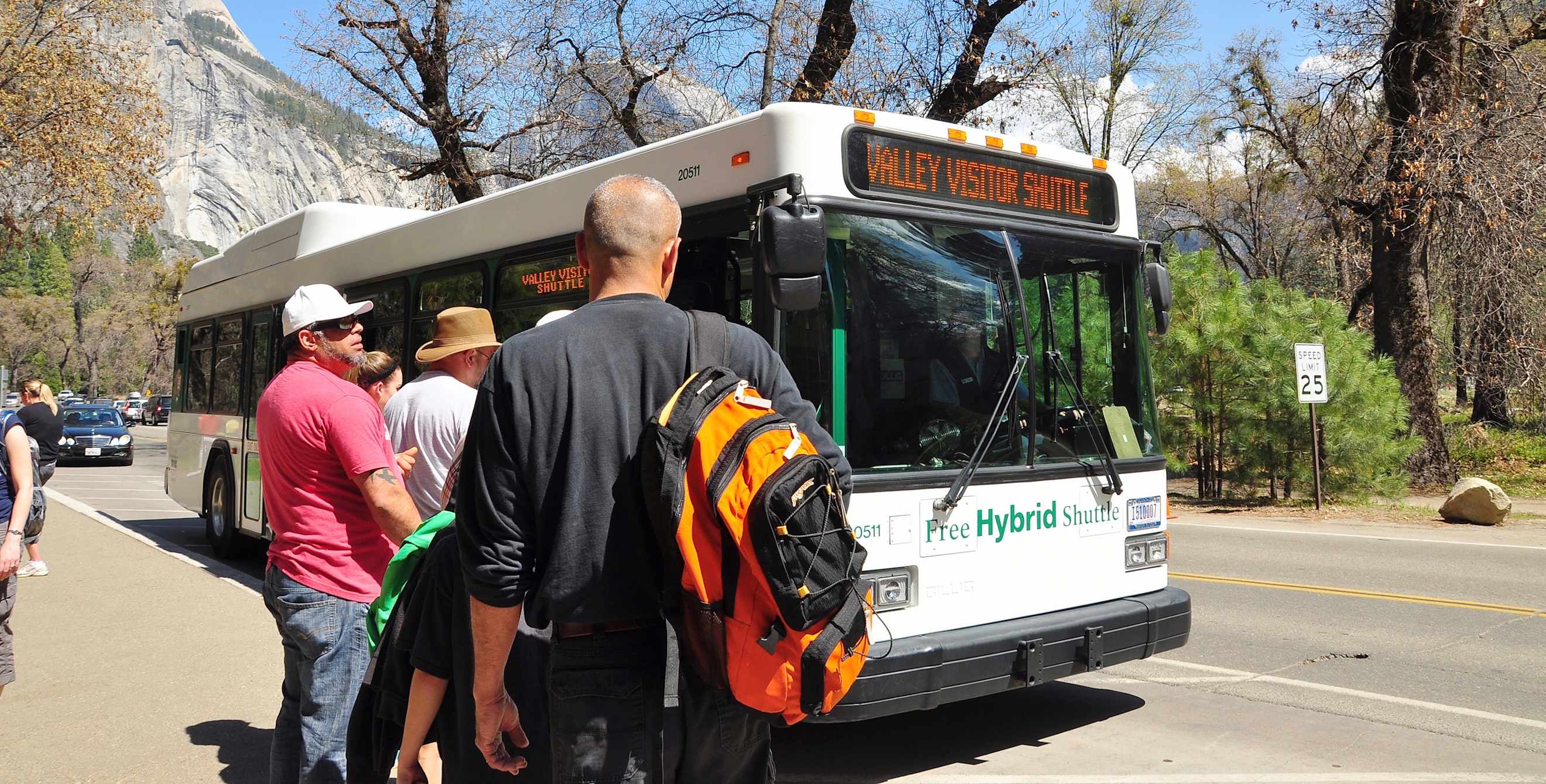
Travel the Easy Way to Yosemite with YARTS
Tired of bumper-to-bumper traffic on your way to Yosemite National Park? Consider these alternates.

Yogi Berra’s famous line about a popular restaurant—“It’s so crowded, no one goes there anymore”—does not apply to Yosemite National Park. Despite a 1997 flood that put a short-lived damper on visitation, the park has hardly lost its magnetic effect. In 2010, more than 4 million people passed through its gates, a figure on par with pre-flood numbers. In 2011, visitation cracked the 4 million mark again. All of which is great, except for the strain it puts on local roadways.
In the past years, the gridlock created by the influx of cars in Yosemite has led to instances of road rage and simmering frustration throughout the park. Yosemite is a national treasure, and an economic boon to the communities that surround it. The more people who experience the park’s beauty, the better. But traffic jams aren’t anyone’s idea of nature’s splendor. Which brings us to the central point.
The park now urges travelers to get out of their cars and consider alternative forms of transportation into the park. Other options exist, thanks to the Yosemite Area Regional Transportation System (YARTS). Since its birth in May of 2000, YARTS has been providing visitors to Yosemite with comfortable, economical and convenient alternatives to driving, with air-conditioned bus service into the park and its gateway communities.
YARTS operates year round on Highway 140 through Mariposa, Merced and El Portal (in addition to other seasonal routes from Mammoth Lakes and Mono County). But that service grows especially vital in June, July and August, when visitation to Yosemite hits its peak. “Those are the months when we really see congestion, especially in valley.” says former Yosemite park ranger Kari Cobb.
Among the many options travelers have with YARTS is to park their cars on the 140 corridor, just outside Yosemite’s gates, and ride a bus into the park. The cost of a ticket (they range from $2 to $32 depending on the traveler’s age and where they board) covers the cost of park admission. But that’s not the only benefit it brings. Riding YARTS allows Yosemite visitors to see the park in a whole new way, without the headaches and distractions that come with sitting behind the wheel. Once inside the park, visitors can rely on public shuttle services to get from one place to another. “It’s important to know that once YARTS drops you off, you’re not just stuck in one place,” Cobb says.
Yes, Yosemite gets crowded, especially in the summer. But that doesn’t mean travelers should stop going. They should just consider going in a different way-—a way that alleviates traffic congestion, and increases the enjoyment for everyone. For more information, visit yarts.com.